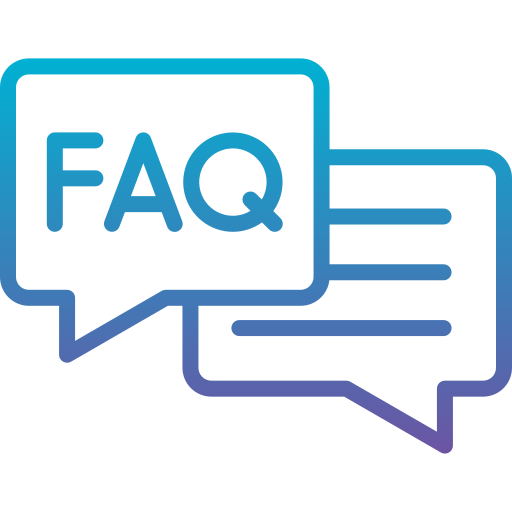As someone who helps businesses connect with their audience, I often see the challenge: how do you bridge the gap between your innovative solution and a user quickly grasping its value? Making complex simple, quickly? Getting potential customers to understand exactly what you offer, without overwhelming them, is crucial for driving action.
This is where the visual clarity of a well-crafted explainer shines. Specifically, diving into 2D flat design explainer video examples can spark ideas for simplifying your message and capturing attention. It's about creating that "aha!" moment for your audience that leads directly to inspired actions like signups or conversions.
It’s crucial to plan ahead when it comes to high-quality video production. Discuss with our team, how you can get visual style, budget, timeline in sync.
Jai Ghosh
Video Producer at Advids
Let's talk

How do 2D animated explainer videos simplify complex ideas?
2D animated explainers simplify complex ideas by breaking them into digestible visual chunks using relatable characters, metaphors, and simple diagrams. Sequential illustration clarifies processes step-by-step, while flat design minimizes clutter, focusing attention on the core message for better comprehension and retention.
How does visual storytelling work in animated explainer videos?
Visual storytelling in animated explainers creates emotional connection with a clear narrative arc: problem, solution, outcome. Visuals translate the script into tangible scenes, using consistent design, characters, and transitions to guide the viewer seamlessly through the story and reinforce the message.
What are the benefits of using 2D animation for explainer videos?
Benefits of 2D animation include cost-effectiveness and limitless creative flexibility to visualize complex or abstract concepts. The clean flat design style is highly digestible, visually appealing, and engaging across audiences, effectively simplifying offerings and making the message memorable.
What is the typical process for creating a 2D explainer video?
The typical process for a 2D explainer video starts with scriptwriting, followed by storyboarding to visually plan scenes. Illustration creates assets, then animation brings them to life. The final steps involve adding sound, music, and voiceover before final editing and rendering.
How are motion graphics used in explainer videos?
Motion graphics enhance explainer videos by animating text, data, and icons to visualize statistics, creating dynamic scene transitions, illustrating abstract concepts via animated diagrams, and highlighting key points with movement. This improves visual clarity and engagement within the flat design style.
How can custom animation enhance an explainer video?
Custom animation enhances explainers by ensuring perfect brand alignment and allowing unique characters or scenarios that deeply resonate with the target audience. It precisely illustrates unique features, helps the video stand out from templates, and provides complete flexibility to visualize the exact required message.
How long should a 2D animated explainer video be?
Most experts recommend keeping 2D animated explainer videos between 60 and 90 seconds for optimal online engagement and viewer retention. The ideal length depends on topic complexity and audience attention span, but the focus should always be on conveying the core message concisely to maximize impact.
What is the role of a script in a 2D explainer video?
The script is the essential foundation, defining the message, audience, and call to action. It dictates the narrative flow, structure, and pacing, while also specifying the visuals needed. Every production stage relies directly on the script to ensure a clear, consistent, and effective message.
What makes an explainer video engaging and memorable?
Engaging explainers use clear, concise messaging and visually appealing, consistent flat design. A compelling narrative with relatable characters creates emotional connection. Dynamic animation and well-timed motion graphics hold attention, while a strong call to action makes the video purposeful and memorable.
Can 2D animation effectively explain technical concepts?
Yes, 2D animation is highly effective for technical concepts, simplifying complex systems into visual components. It illustrates internal mechanisms or abstract processes via animated diagrams and step-by-step visuals. Flat design reduces clutter, aiding understanding of intricate details without overwhelming viewers.
Choosing the right flat design color palette
Visual clarity inherent flat design principles creates powerful audience experiences. Creators leverage simplified visual approach direct viewer attention towards essential key messages driving desired audience action effectively. This deliberate simplicity ensures viewer focus remains core message. Strategic visual element choices amplify video impact beyond mere appearance reaching measurable business outcomes . A 2D flat design explainer video functions powerful tool achieving specific business results desired through direct clear communication.
Applying core principles present a flat animation video extends video reach strategic element application significantly. Color palettes serve fundamental visual guide supporting development clear calls action prompting viewer next step. Action oriented specific text examples " Start Your Free Trial " "Request Demo" "Download Report" leads significantly higher conversion rates general text "Learn More" due direct instruction. Measuring return investment generated involves tracking video production cost versus total value generated business. Key metrics include increased qualified leads reduced sales cycle time decreased support tickets volume representing tangible business benefit. Understanding audience engagement through viewer behavior analysis refines video impact effectiveness continually providing data driven insights . Heatmaps attention tracking tools reveal precise viewing patterns identifying confusing segments frustrating drop off points allowing targeted revisions. Granular data provides valuable insights optimizing video content improving overall audience engagement retention rates boosting video ROI. Incorporating social proof including well known client logos user statistics quickly builds credibility establishes audience trust effectively building confidence.
- Showing product features real world scenarios demonstrating integration existing workflows adds significant relatability belief increases perceived user value solving genuine problems.
- Analyzing granular viewer behavior data identifies specific areas video improvement ensures message resonates strongly target audience needs maximizing engagement effectiveness.
- A B testing various video elements such thumbnail initial content CTA wording script variations reveals optimal strategies achieving higher conversions driving overall success validating video decisions.
- Adapting video content style length platform considerations viewer intent viewing environment maximizes reach potential impact viewer engagement across diverse channels.
Key animation principles in 2d flat design
Moving beyond the compelling visuals and clear narratives inherent in a compelling flat design video. Optimizing their impact requires strategic focus on guiding the audience toward specific outcomes. A critical element is implementing clear, actionable calls to action that serve as a direct bridge between viewer engagement and desired conversion goals. Measuring effectiveness means looking closely at the return on investment, tracking how production costs translate into tangible business value.
Demonstrating a product or service in relatable, real-world scenarios significantly enhances viewer understanding and perceived value. Showing how it fits seamlessly into existing workflows or directly addresses specific user challenges makes the solution tangible. For a 2D animation explainer , understanding how viewers interact with this demonstrated value is key. Analyzing viewer behavior through analytics tools reveals which parts resonate and where attention might drop off, providing invaluable data for refinement.
Building trust happens quickly by incorporating social proof, perhaps featuring recognizable client logos or highlighting positive user statistics. Continuous improvement relies on structured A/B testing , experimenting with different video elements like thumbnails or opening hooks to see what best captures initial interest. Optimizing for diverse viewing platforms means tailoring content, recognizing the need for concise, sound-optional messaging on social feeds versus more detailed presentations on dedicated product pages.
- Implement clear calls to action using strong verbs aligned with specific goals.
- Track metrics like leads, sales cycle reduction, or support cost decrease to measure ROI .
- Utilize viewer analytics to identify performance trends and optimize content flow.
- Tailor video content and CTAs for optimal performance across different digital platforms.
Applying these strategic principles ensures these videos not only explain effectively but also actively contribute to achieving measurable business objectives .
Developing compelling flat character styles for explanation
Flat characters serve as visual guides, simplifying complex ideas within a video narrative. Their minimalist design helps focus viewer attention squarely on the message, preventing visual clutter. Well-crafted expressions and actions convey necessary emotional context and personality, making technical or abstract concepts more relatable and easier for viewers to grasp throughout a 2d animation video. Consistency in these character styles across an entire series or brand communication builds familiarity and trust.
Demonstrating product features comes alive when characters interact with them in real-world scenarios. Showing characters successfully using a service or solving a problem makes the product tour believable and highlights its value within relevant contexts. This integration into existing workflows, as depicted by the characters actions, significantly increases the perceived utility and effectiveness of the offering for prospective users.
Transitioning the viewer towards action becomes seamless when characters subtly reinforce the desired next steps. Ultimately, guiding viewers towards specific calls to action is paramount. These prompts should be action-oriented like "Start Your Free Trial" or "Request a Demo," precisely matching the video objective and where the viewer is in their decision process, rather than generic suggestions.
- Utilizing viewer behavior data, such as heatmaps, reveals how audiences interact with characters, showing exactly which parts resonate or where interest drops.
- Incorporating social proof can involve depicting characters associated with known brands or presenting user statistics visually, building rapid credibility.
- A/B testing different character designs or their placement helps optimize viewer resonance and ultimately drives higher conversion rates.
- Optimizing for various platforms means character introductions and visual prominence adapt to viewer intent and the viewing environment, ensuring maximum impact for the 2d explainer video.
Focusing on how flat characters enhance storytelling and integrate with actionable outcomes elevates the entire viewer experience from initial engagement through to conversion.
Effective use of icons in explainer video design
Icons serve as powerful visual shorthand within the 2D flat aesthetic, going beyond simple decoration. They function as concise symbols that convey complex ideas rapidly, providing visual anchors that complement the minimalist style already discussed. Consistent icon design and strategic placement guide the viewer's eye and reinforce key messages, becoming integral to the narrative flow and ensuring information is easily digestible.
Effective explainers extend their impact through clear, specific calls to action. Generic prompts are replaced with action-oriented text directly relevant to the viewer's journey, such as "Start Your Free Trial" or "Request a Demo." Measuring the true value involves tracking the return on investment, comparing production costs against tangible business outcomes like improved qualified leads or a decrease in support tickets resulting from better-informed customers.
Showing products operating in real-world scenarios builds immediate relatability. Demonstrating how a product seamlessly integrates into existing workflows or solves specific problems users face daily increases its perceived worth. Incorporating social proof, perhaps by briefly displaying well-known client logos or citing statistics about satisfied users, quickly establishes credibility and trust. Understanding viewer behavior with their abstract animation video allows creators to identify which scenes resonate most or cause drop-offs, providing crucial data for refinement.
- Analyzing viewer behavior through tools like heatmaps reveals exactly which video segments capture attention or lead to viewers leaving.
- Conducting A/B tests on various video elements, from the initial thumbnail to the final call to action wording, yields insights into what resonates most with the target audience.
- Optimizing their animated business video for distinct platforms becomes necessary, considering varied viewing environments and user intent, particularly the need to convey meaning effectively even without sound on social feeds.
- Tailoring video length and complexity based on where it will be viewed ensures maximum impact and viewer retention.
Ultimately, leveraging strategic elements alongside strong visual design is key to maximizing the effectiveness and achieving measurable results from explainer videos.
Structuring the message for maximum explainer impact
Structuring a message for maximum explainer impact requires focusing on the audience's journey and desired outcome. They have seen how effective flat design can be, now let's ensure their message truly lands. Every element, from the opening hook to the final prompt, should serve a clear purpose, guiding viewers towards action.
Crafting a compelling narrative means showing how the product solves real problems. Instead of abstract descriptions, demonstrate features within everyday scenarios. This makes the solution tangible and increases perceived value by showing integration into existing workflows or daily tasks. Analyzing viewer behavior helps refine this; tracking tools reveal which parts resonate most, highlighting segments that might need clarifying or where interest wanes.
Incorporating social proof builds immediate trust. Briefly showcasing well-known users or citing user statistics adds credibility without lengthy testimonials. For instance, a character animation explainer might show a relatable persona successfully using the product, subtly incorporating a familiar logo on their screen or mentioning how many businesses benefit. This grounds the concept explanation video in real-world success.
- Implement specific, action-oriented calls to action directly related to the video's objective and the viewer's stage.
- Measure return on investment by comparing production costs to generated value, such as leads or reduced support queries.
- Continuously test elements like thumbnails, intros, or CTA wording to see what drives higher conversions.
- Optimize video content for different platforms, considering viewing habits and the need for sound-off comprehension on social feeds.
Ultimately, a well-structured explainer video ensures the message is not just seen but understood and acted upon.
Crafting a clear story arc for your explainer
Crafting a compelling narrative for explainer videos extends beyond simple visuals; it involves designing a journey for the viewer. Teams should focus on demonstrating value by placing the product or service within real-world scenarios, showing how it solves specific problems or integrates into existing workflows. This approach makes the message instantly more relatable and highlights tangible benefits. Building trust early can also strengthen the story; incorporating social proof, such as discreetly featuring well-known logos or referencing user statistics, quickly establishes credibility.
Analyzing how viewers interact with the video provides critical insights into the story's effectiveness. Tools tracking viewer behavior, like heatmaps, reveal exactly which moments resonate or where interest drops. This data is invaluable for identifying confusing segments or pacing issues within the narrative flow, allowing creators to refine the story for maximum impact and comprehension. Adapting the story for different platforms is also key; a video for social media feeds needs an immediate hook and might rely on text overlays, while one on a product page can explore details more deeply, assuming higher viewer intent.
Optimizing the explainer involves continuous refinement. A/B testing different versions—perhaps varying the opening scene, the script's emphasis, or visual elements—can uncover significant opportunities to improve viewer engagement and drive desired actions . This iterative process ensures the story arc is not just clear but also powerfully persuasive across various viewing environments. Whether creating a detailed product overview for a corporate explainer video or simplifying complex ideas for an educational animation video, refining the narrative arc is paramount for viewer connection.
- Design specific, action-oriented calls to action that clearly guide the viewer on the next step.
- Utilize analytics to pinpoint exactly where viewers disengage or rewatch parts of the story.
- Systematically test different narrative elements or visual approaches to optimize performance.
- Go beyond simple view counts; measure ROI by tracking concrete business outcomes tied to the video.
Ultimately, a well-structured story arc, informed by data and refined through testing, transforms a simple explanation into a powerful tool that resonates with the audience and achieves its objectives.
Integrating a strong call to action into video
Directing viewer action represents a critical stage after visually explaining concepts simply. Teams focus on guiding viewers towards specific next steps once understanding occurs. This transition moves viewers from passive observers into active participants, driving tangible results. A strong call ensures viewers know exactly what action to take following their viewing experience.
Creating effective calls goes beyond generic prompts. Instead, use action-oriented phrasing. Consider crafting a healthcare explainer video ; here, a precise call guiding viewers to relevant patient resources or professional portals becomes paramount. They find viewers respond better to clear direction aligned with their current needs. Measuring success means tracking investment against the value generated.
- Replace vague "Learn More" with specific instructions like "Start Your Free Trial" or "Download the Report".
- Showcase product features using real-world scenarios, demonstrating integration into daily tasks for increased perceived value.
- Analyze viewer behavior via heatmaps or attention tracking to identify engagement points and sections causing drop-off.
- Incorporate social proof, like brief mentions of satisfied users or recognizable logos, to build trust swiftly.
Optimizing a Landing page video involves rigorously tracking viewer engagement metrics to ensure the call compels action directly on that page. A/B testing different video components yields insights into audience resonance and conversion drivers. Understanding viewer intent across various platforms helps tailor video length and content, ensuring maximum impact.
Simplifying complex information visually
Simplifying complex information visually extends beyond clear design; it involves guiding viewers toward meaningful action and understanding the impact of their journey. Teams creating a marketing animation video must consider how every element contributes to measurable outcomes. This means carefully crafting calls to action that are impossible to ignore and resonate with viewer intent. Generic prompts lack the power of specific instructions tailored to the desired next step, whether that is initiating a free trial or requesting a detailed demonstration .
Measuring the true return goes deeper than simple view counts. It requires correlating the video's cost against tangible value, such as an uptick in qualified leads or a reduction in support inquiries because the video clearly explained product features. Showing the product integrated into real-world scenarios makes its value immediately apparent, increasing relatability. Demonstrating how it fits into existing workflows helps potential users envision its practical benefits effortlessly.
Understanding precisely how viewers interact with the content is paramount. Tools like heatmaps and attention tracking reveal which parts captivate and where interest might wane. This granular data pinpoints confusing sections, guiding refinements. A minimalist explainer video still benefits immensely from this analysis, ensuring its streamlined message lands effectively. Incorporating social proof, perhaps logos of satisfied clients or compelling user statistics, quickly builds trust and credibility with the audience, leveraging the power of peer validation.
- Experimenting through A/B testing different versions provides invaluable insights into audience preferences.
- Testing variations in elements like thumbnail images, initial content segments, or the call to action's wording drives optimization.
- Gaining clarity on what resonates most with the target audience directly supports higher conversion rates.
- Adapting the video for different viewing platforms ensures maximum reach and engagement, recognizing diverse audience behaviors and technical requirements.
Using visual metaphors to explain concepts
Driving viewers toward specific actions proves paramount for explainer video success. Beyond conveying a message visually, these videos must guide audiences effectively. Clear, specific calls to action move viewers from passive watchers to engaged participants. Instead of generic prompts like "Learn More," action-oriented language such as "Start Your Free Trial" or "Request a Demo" provides direct guidance. These prompts align precisely with the video's objective and where the viewer stands in their journey, significantly boosting conversion potential.
Measuring the true impact of a product explainer animation involves more than just view counts. It requires tracking production costs against tangible value generated. This value manifests in forms like an increase in qualified leads, a shorter sales cycle stemming from better-informed prospects, or even a decrease in support inquiries as users gain clarity from the video content. Demonstrating products within real-world contexts makes a tour highly relatable. Showing features integrated into existing workflows or solving problems specific to an industry dramatically increases perceived value and believability.
Analyzing how viewers interact provides crucial insights. Tools like heatmaps and attention tracking reveal precisely which segments viewers watch, rewatch, or skip. This granular data is invaluable for identifying confusing sections or points where viewer interest wanes. Incorporating social proof quickly builds credibility and trust. Brief flashes of well-known company logos using the product or mentioning statistics about satisfied users adds powerful validation, leveraging the audience's trust in others.
A/B testing different video elements refines performance considerably. Experimenting with thumbnail images, the critical first few seconds, the placement or wording of calls to action, or even minor script variations yields significant data on what resonates most effectively with the target audience and drives higher conversions.
- Optimizing for diverse platforms considers viewer intent and environment consciously.
- Videos targeting social media feeds demand immediate attention and often function without sound, requiring clear text overlays and concise messaging.
- Videos embedded on a product page assume higher viewer intent, allowing for greater detail and a slightly longer format.
- These strategic choices ensure the video performs optimally where audiences encounter it.
Author & Editor Bio
A video producer with a passion for creating compelling video narratives, Jai Ghosh brings a wealth of experience to his role. His background in Digital Journalism and over 11 years of freelance media consulting inform his approach to video production. For the past 7 years, he has been a vital part of the Advids team, honing his expertise in video content planning, creation, and strategy.
His collaborative approach ensures that he works closely with clients, from startups to enterprises, to understand their communication goals and deliver impactful video solutions. He thrives on transforming ideas into engaging videos, whether it's a product demo, an educational explainer, or a brand story.
An avid reader of modern marketing literature, he keeps his knowledge current. Among his favorite reads from 2024 are "Balls Out Marketing" by Peter Roesler, "Give to Grow" by Mo Bunnell and "For the Culture" by Marcus Collins. His results-driven approach ensures that video content resonates with audiences and helps businesses flourish.



